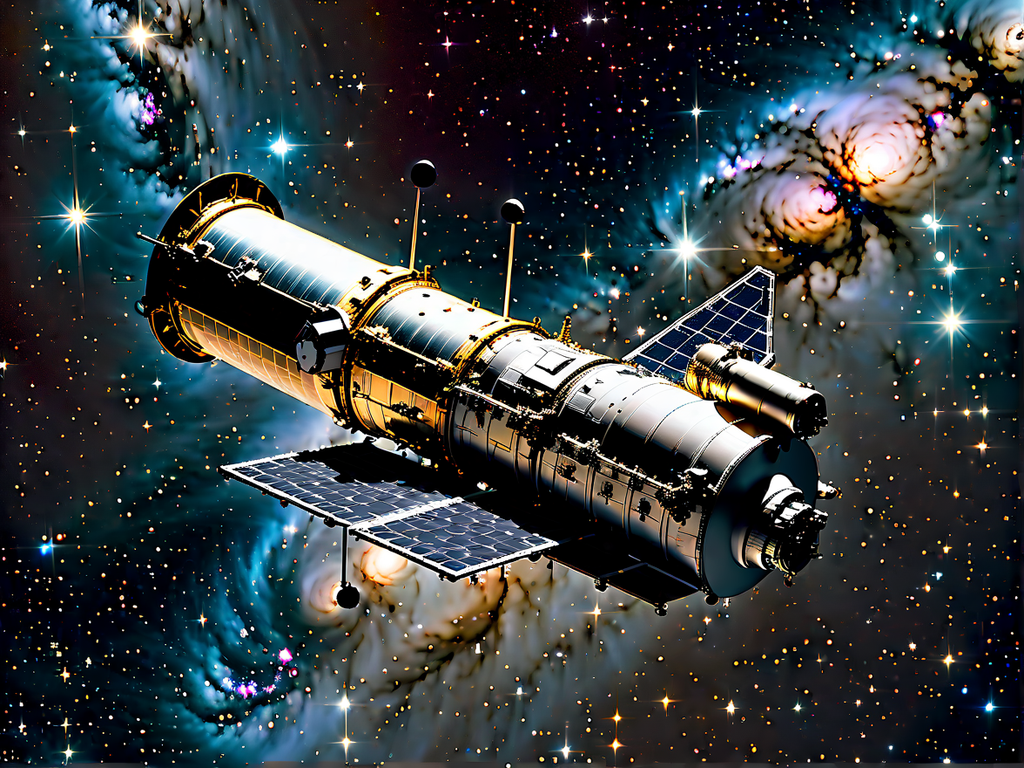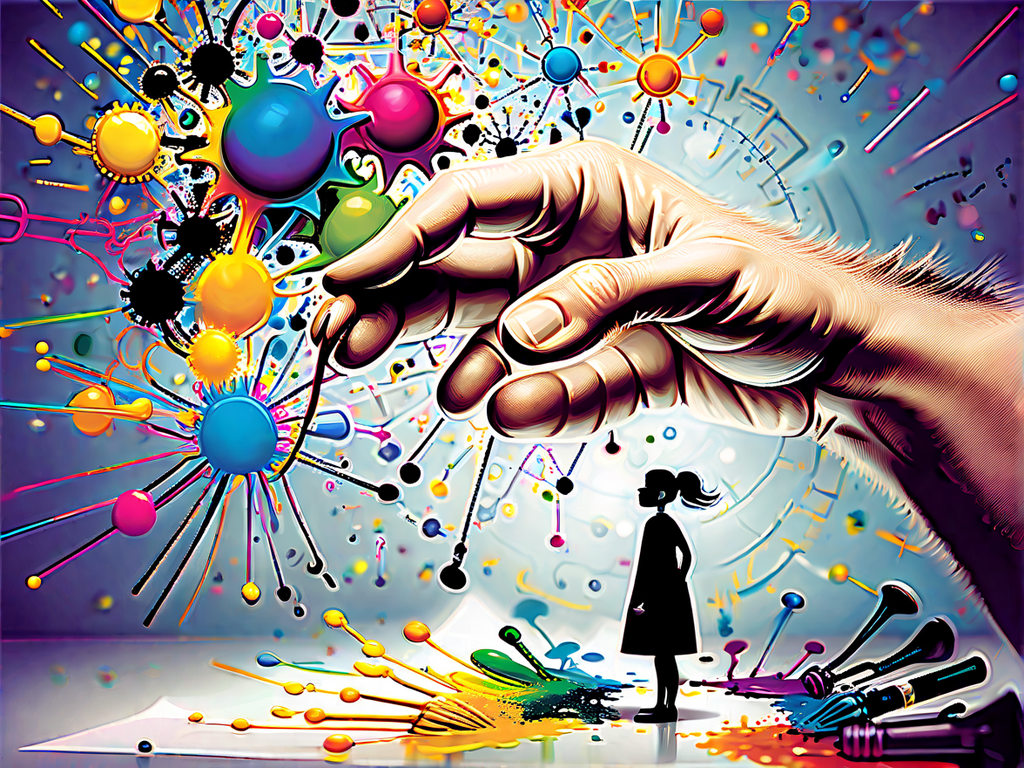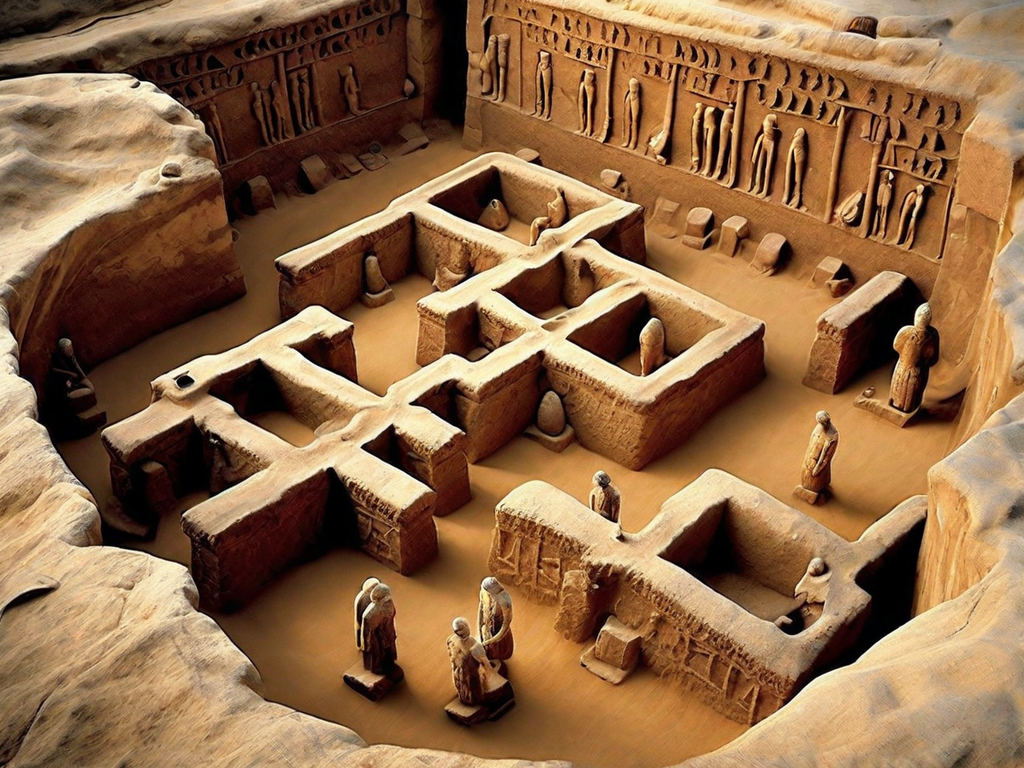Welcome to an exploration of the hidden histories of women in science, their forgotten contributions, and their status as unsung heroes. Throughout history, women have made significant strides in scientific fields, yet their achievements have often been overshadowed or relegated to the background. It is crucial to uncover their stories and acknowledge their invaluable contributions to the scientific community and society as a whole.
Women in science have faced numerous barriers and challenges, yet their determination and resilience have allowed them to break through societal norms and make groundbreaking discoveries. From the early pioneers who shattered glass ceilings to the trailblazers who made remarkable scientific advancements, their efforts have paved the way for future generations of women in science.
Not only have women excelled in scientific discoveries, but they have also played a crucial role in technological innovation. However, their inventions have often been forgotten or overshadowed by their male counterparts. This section will shed light on the stories of these forgotten inventors and their vital contributions to technological advancements.
Furthermore, we will delve into the realms of mathematics and computing, where women have made profound impacts that have often gone unrecognized. These hidden figures have shaped these disciplines, overcoming societal and gender norms to leave an indelible mark on scientific progress.
Unfortunately, gender bias and discrimination have posed significant challenges for women in science throughout history. This article will address these obstacles and highlight the triumphs of women scientists who have navigated and conquered these barriers. Their stories reveal the immense resilience and strength of women in the face of adversity.
Despite the challenges they have endured, women in science continue to make remarkable contributions in various fields today. This article will celebrate their accomplishments and shed light on their current endeavors, reflecting the progress made in recognizing and empowering women in the scientific community.
In conclusion, this article aims to uncover the hidden histories of women in science, recognize their forgotten contributions, and celebrate their status as unsung heroes. By honoring their achievements, we can foster a more inclusive and diverse scientific community, ensuring that future generations of aspiring scientists have diverse role models to inspire them on their scientific journeys.
Breaking Barriers: Early Female Scientists

During periods of history marked by gender inequality and limited opportunities for women, there were pioneering individuals who defied societal expectations and made significant contributions to the field of science. These early female scientists, often overlooked in history books, played a crucial role in advancing scientific knowledge and breaking barriers for women in science.
Women in science history faced numerous challenges, including limited access to education, exclusion from professional societies, and the expectation that their primary roles should be confined to the domestic sphere. Despite these obstacles, they persisted in pursuing their scientific passions, paving the way for future generations of women in science.
- Marie Curie, the first woman to win a Nobel Prize, made groundbreaking discoveries in radioactivity, revolutionizing our understanding of the atom.
- Rosalind Franklin’s work in X-ray crystallography played a critical role in the discovery of the structure of DNA, although her contributions were initially overshadowed.
- Ada Lovelace, an English mathematician, is widely considered to be the world’s first computer programmer, envisioning the potential for computers beyond basic calculations.
These early female scientists defied societal expectations, challenging the prevailing notion that women were intellectually inferior. They demonstrated extraordinary determination and resilience, making their mark on the scientific community and paving the way for future generations of women in science.
These pioneers not only contributed to scientific knowledge but also shattered stereotypes and paved the way for future generations of women in science. Their tireless efforts inspire us to recognize the invaluable contributions of women in scientific history and celebrate their legacy as true pioneers.
Trailblazers: Women in Scientific Discoveries
Throughout history, numerous women have made groundbreaking contributions and significant advancements in various scientific fields, leaving an indelible mark on the scientific community. These notable women scientists have defied societal norms and overcome considerable obstacles to pursue their passion for discovery.
One such trailblazer is Marie Curie, a physicist and chemist known for her pioneering research on radioactivity. Her groundbreaking discoveries, including the isolation of radium and polonium, not only earned her two Nobel Prizes but also revolutionized the field of science.
“I was taught that the way of progress was neither swift nor easy.”
– Marie Curie
Another remarkable woman scientist is Rosalind Franklin, whose work on X-ray crystallography was instrumental in unraveling the structure of DNA. Her groundbreaking images, captured using X-ray diffraction, provided vital insights that contributed to the discovery of the double helix structure.
Furthermore, Ada Lovelace, often referred to as the world’s first computer programmer, made significant contributions to the field of computing in the 19th century. She collaborated with Charles Babbage on his Analytical Engine, creating the first algorithm designed to be processed by a machine.
Notable Women Scientists and Their Impact
- Marie Curie: Her discoveries have paved the way for advancements in nuclear physics and medical science.
- Rosalind Franklin: Her work on DNA structure laid the foundation for modern genetics research.
- Ada Lovelace: Her pioneering work in computing has been instrumental in shaping the digital age.
These are just a few examples of the countless women who have made groundbreaking contributions to the scientific community. Their achievements have not only expanded our understanding of the world but have also shattered gender barriers and inspired future generations of women scientists.
Forgotten Inventors: Women and Technological Innovation

In the realm of technological innovation, women inventors have made significant but often overlooked contributions that have shaped the world we live in today. These visionary women have invented groundbreaking technologies, yet their names remain buried in the shadows of history. It is time to shed light on their forgotten contributions and celebrate their ingenuity.
From the early days of industrialization to the digital age, women inventors have paved the way for numerous advancements across various fields. Their inventions have transformed industries, improved lives, and revolutionized the way we interact with technology.
Pioneering Inventions
“Invention, it must be humbly admitted, does not consist in creating out of voice, but out of chaos.” – Mary Shelley
One such pioneering inventor was Hedy Lamarr. By transforming the technological landscape, Lamarr’s invention of frequency hopping spread spectrum communication during World War II laid the foundation for modern wireless communication and became a precursor to Wi-Fi, Bluetooth, and GPS technologies.
Additionally, Dr. Shirley Ann Jackson, a theoretical physicist, made notable contributions to the development of the touch-tone telephone, caller ID, and fiber optic cables. Her groundbreaking work revolutionized telecommunications, enabling the fast and reliable transmission of information globally.
Overlooked Legacies
Unfortunately, the contributions of women inventors like Lamarr and Jackson have often been overshadowed or forgotten. The historical marginalization of women in the field of technological innovation has perpetuated a narrative that disregards their tremendous achievements.
The lack of recognition for female inventors extends beyond famous names, with countless women inventors whose stories and creations go unrecognized. These forgotten inventors have made remarkable contributions that have shaped our everyday lives, from household appliances to medical devices and beyond.
Embracing Their Legacy
It is imperative that we showcase the groundbreaking inventions of women inventors and ensure their rightful place in the annals of technological history. By recognizing their contributions, we can inspire future generations of women to pursue careers in science, technology, engineering, and mathematics (STEM) and challenge societal norms that have persistently limited their involvement in these fields.
- Highlighting the achievements of women inventors through educational initiatives and awareness campaigns
- Supporting women-led innovation and entrepreneurship in the tech industry
- Encouraging diversity and inclusivity in the patenting and intellectual property landscape
By celebrating the forgotten inventors, we actively acknowledge the role of women in driving technological progress and foster an environment that embraces diversity and innovation.
Hidden Figures: Women in Mathematics and Computing
Throughout history, women have made significant contributions to the fields of mathematics and computing, yet their achievements have often gone unrecognized. These unsung heroes, known as hidden figures, have played a pivotal role in shaping these disciplines and pushing the boundaries of what was once thought possible.
Women in mathematics have made groundbreaking discoveries and advancements that have transformed our understanding of numbers, patterns, and equations. From Ada Lovelace, who is considered the world’s first computer programmer, to Maryam Mirzakhani, the first woman to receive the prestigious Fields Medal, their brilliance and ingenuity continue to inspire generations to come.
“Mathematics is not only about equations and formulas. It is a language that provides us with the tools to understand the world around us. Women have been instrumental in unlocking its secrets and pushing the frontiers of mathematical knowledge.”– Dr. Katherine Johnson
In computing, women have played a vital role in the development of early computer programming and technology. Figures like Grace Hopper, who pioneered the concept of machine-independent programming languages, and Ada Lovelace, whose visionary insights laid the foundation for modern computing, have left an indelible mark on the industry.
Despite their significant contributions, women in mathematics and computing have faced numerous challenges, often battling gender norms and bias. However, their determination and resilience have prevailed, paving the way for future generations of women in these fields.
- They have shattered stereotypes and proven that brilliance knows no gender.
- They have revolutionized our understanding of numbers and patterns.
- They have pushed the boundaries of computing technology and programming.
By celebrating the achievements of these hidden figures, we not only recognize their individual contributions but also inspire and empower women in mathematics and computing today. Their stories serve as a reminder that diversity and inclusion are essential for progress in these fields and that acknowledging their achievements is not only a matter of historical accuracy, but a matter of fostering innovation and creativity.
As we continue into the future, let us remember the hidden figures who have paved the way and honor their invaluable contributions to mathematics and computing. By doing so, we create a more inclusive and diverse scientific community that benefits us all.
Challenges Faced: Gender Bias and Discrimination
In the realm of scientific pursuits, gender bias and discrimination have imposed significant hurdles for women scientists. These challenges, rooted in societal norms and stereotypes, have hindered the progress and recognition of women’s contributions to the scientific community.
Throughout history, women scientists have faced gender bias that has limited their opportunities for advancement and hindered their professional growth. Discrimination based on gender manifests in various forms, from unequal access to resources and funding to dismissive attitudes and prejudices.
Gender bias profoundly affects women scientists, often leading to distorted perceptions of their abilities and potential. Stereotypes, such as the notion that women are better suited for nurturing roles rather than scientific endeavors, have perpetuated discriminatory practices in the field.
“Women haven’t been given the opportunity to fully showcase their capabilities and potential due to persistent gender bias and discrimination. It is crucial to address these challenges, create a level playing field, and empower women in science.”
Discrimination against women in science also extends to inequitable representation and lack of institutional support. The underrepresentation of women in leadership roles and decision-making positions continues to perpetuate the gender imbalance and reinforces biases within the scientific community.
- Challenges faced by women scientists:
- Limited access to funding and resources
- Unequal opportunities for career advancement
- Implicit bias in evaluation and recognition
- Lack of mentorship and networking opportunities
- Institutional barriers and cultural norms
To combat gender bias and discrimination, measures must be taken to create a more inclusive scientific environment. Efforts should include implementing policies that promote equal opportunities, advocating for diverse representation in leadership roles, and fostering mentorship programs to support women scientists.
By overcoming these challenges, women scientists can fully contribute their unique perspectives and talents, leading to a more diverse and impactful scientific community.
Reclaiming Recognition: Celebrating Women in Science Today
Women in science have made remarkable contributions throughout history, yet their achievements have often been overlooked or overshadowed. However, in recent years, there has been a significant shift in acknowledging and celebrating the accomplishments of women in the scientific community. Today, we are witnessing a powerful movement that is reclaiming recognition for these exceptional women and their groundbreaking work.
One of the key aspects of celebrating women in science is highlighting their current contributions. Women scientists continue to push the boundaries of knowledge and make significant advancements in various fields. From genetics to astrophysics, from medicine to environmental studies, women are making groundbreaking discoveries that shape our understanding of the world. Their dedication, intelligence, and innovative thinking are invaluable assets to the scientific community.
It is essential to recognize and celebrate these women for their exceptional work. By doing so, we not only honor their accomplishments but also inspire future generations of aspiring scientists, regardless of gender, to pursue their scientific passions. visibility plays a crucial role in empowering women in science and promoting gender equality in the field.
When women in science are celebrated, it sends a powerful message that gender should never limit one’s potential in contributing to scientific progress.
Furthermore, celebrating women in science highlights the need for diversity in the scientific community. By recognizing and amplifying the voices of women scientists, we encourage a more inclusive and well-rounded approach to scientific research. Different perspectives foster creativity, innovation, and interdisciplinary collaboration, leading to more comprehensive and impactful outcomes.
As we celebrate women in science, it’s essential to remember that recognition is not just a one-time event but an ongoing commitment. Creating an environment that values and empowers women scientists requires continuous efforts, including providing equal opportunities for career advancement, combating gender bias and discrimination, and ensuring fair representation in leadership positions.
It is inspiring to witness the progress being made in acknowledging and celebrating women in science. Through their current contributions, women scientists are not only reclaiming recognition for their work but also reshaping the future of scientific exploration and innovation.
The journey to full recognition and gender equality in the scientific community is far from over, but by celebrating women in science, we take a significant step forward. Together, let us continue to honor and empower women scientists and create a future where their contributions are fully recognized and celebrated.
Conclusion
In conclusion, the journey of women in science has been marked by resilience, determination, and an unwavering passion for discovery. Throughout history, countless female scientists have made remarkable contributions to their fields, often facing significant challenges and barriers along the way.
It is essential to uncover and highlight the hidden histories of these forgotten women, acknowledging them as unsung heroes and pioneers. By recognizing their accomplishments and shedding light on their stories, we can inspire future generations of women in science and ensure that their important work is not lost or overlooked.
As we reflect on the groundbreaking discoveries, technological innovations, and extraordinary achievements of women in science, it becomes evident that their contributions have shaped our understanding of the world we live in. However, gender bias and discrimination continue to pose significant obstacles for women in the scientific community.
It is crucial for us to actively challenge and dismantle these barriers, creating a more inclusive and diverse scientific landscape. By celebrating and supporting the current contributions of women in science, we can foster an environment that empowers them to thrive and make even more significant advancements in the future.


































